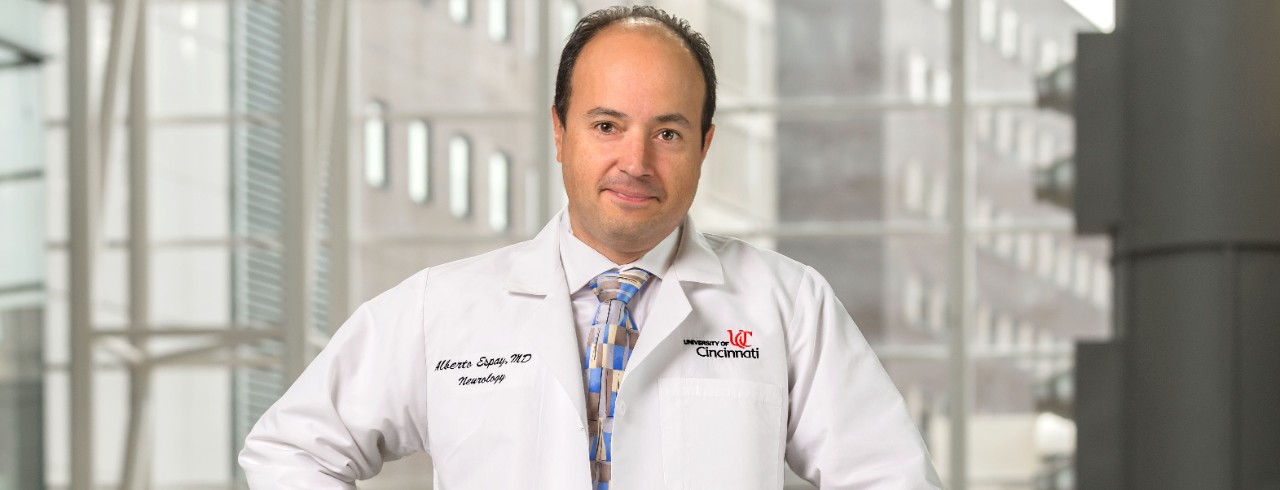
Espay wins Lancet Neurology 20th anniversary essay competition
Essay conveys what future patient visit could look like
An essay on neurology written by Alberto Espay, MD, has won Lancet Neurology’s 20th anniversary essay competition. The essay, “Your After-visit Summary: May 29, 2042” revolves around the diagnostic debriefing to a fictional patient of his new diagnosis of Parkinson’s disease, with biomedical analysis of test results informing a tailored treatment plan.
The essay is available online and will be printed in Lancet Neurology’s 20th anniversary edition in May.
Espay says he was thrilled to win the competition “because it meant that the vision of the essay, a picture vastly different than what we have been doing in caring for our patients, could gain currency with a global readership of neurologists.”
The essay was meant to convey what a future visit with a patient with Parkinson’s disease would look like.
“Rather than saying, ‘You have Parkinson’s based on my experience; trust me,’ we will be saying, 'You have something we have called Parkinson’s, but have no idea what it means,’” Espay says. “We would engage in identifying the biological drivers of each person affected, recognizing that treatments to slow progression can only succeed if tailored to those most biologically suitable to benefit.”
Espay, the James J. and Joan A. Gardner Family Center for Parkinson’s Disease Research Endowed Chair in the Department of Neurology and Rehabilitation Medicine, says medicine is about a decade away from realizing the vision of his essay. He adds the essay was inspired by work currently in progress by the Cincinnati Cohort Biomarker Program, which is trying to unravel the individual biological abnormalities of those affected with neurodegenerative disorders.
“Ultimately, the clinical diagnosis is but a human-made construct about which nature has no idea. And since nature can’t be fooled, we need to be agnostic to our labels and subtype individuals with neurodegenerative disorders according to their biology, not the classification we have used at the bedside for over a century,” he says.
Featured photo at top by Colleen Kelley/UC Creative + Brand
Related Stories
UC College of Nursing Professor honored with AANA education excellence award
December 23, 2025
Susan Newell, assistant professor in the UC College of Nursing, is being recognized by the American Association of Nurse Anesthesiology (AANA) as one of three top educational administrators and instructors. She will receive the Clinical Instructor of the Year Award during AANA's top educator event 2026 EDGE Conference, February 4-7 in Louisville, Kentucky.
A partnership to end pancreatic cancer
December 19, 2025
Since 2010, BSI Engineering has raised more than $1.2 million for pancreatic cancer research at the University of Cincinnati Cancer Center in honor of a friend and inspiration to BSI’s founders, Bryan Speicher.
UC medical students explore ChatGPT’s ability to support qualitative research
December 18, 2025
Newly published research in the journal Medical Science Educator highlights University of Cincinnati College of Medicine student-led work in medical education and examines how artificial intelligence can assist with qualitative research.
